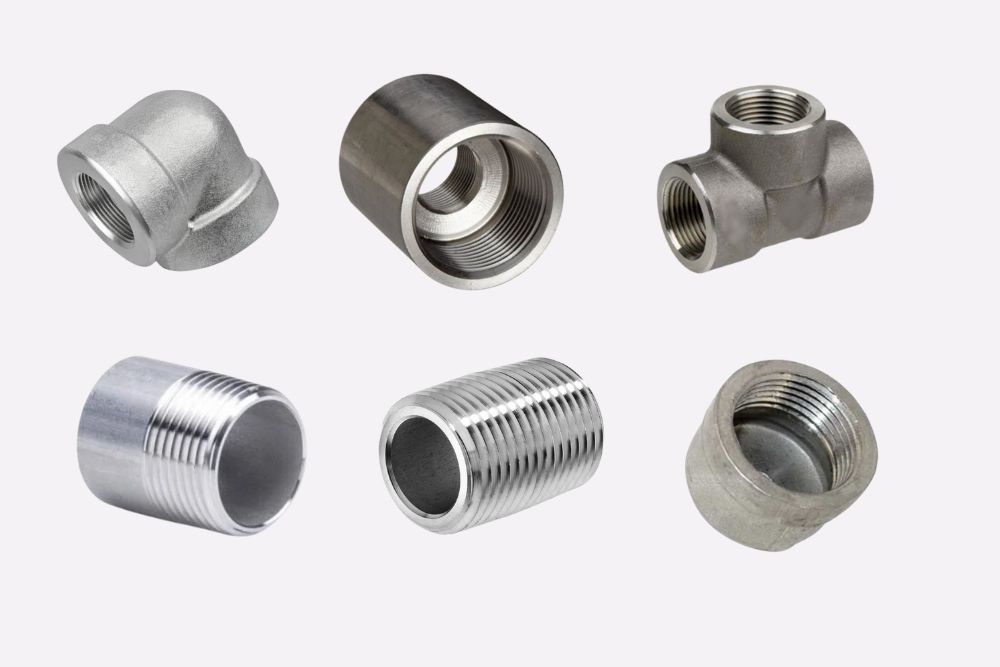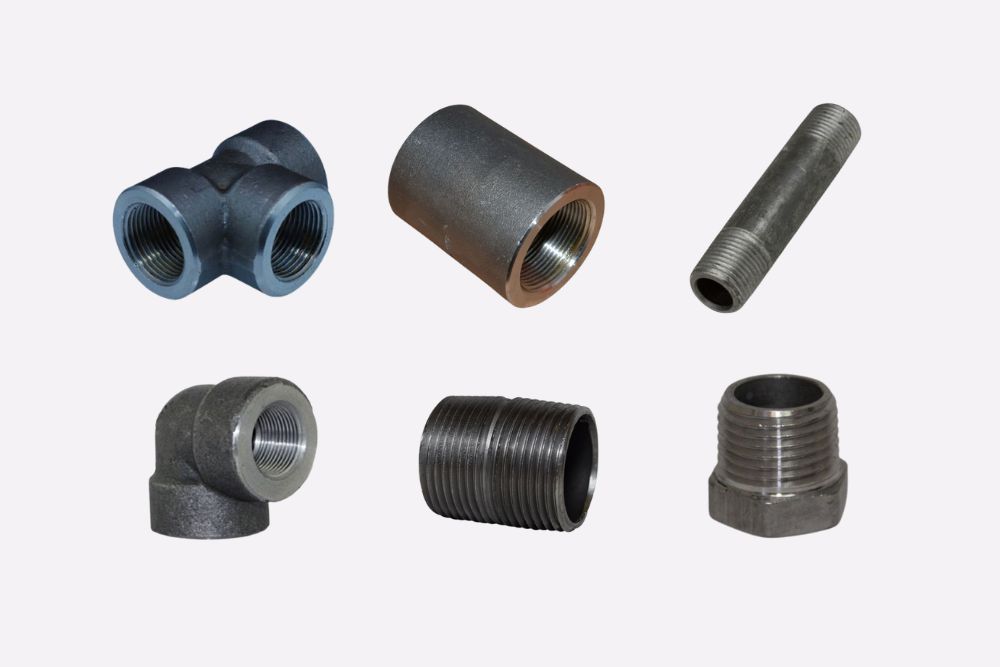Threaded Pipe Fitting
Threaded Pipe Fitting Manufacturer & Supplier
What Are Threaded Pipe Fittings?
Threaded pipe fittings are crucial plumbing and piping components for connecting, branching, and capping pipes. These fittings feature male (external) or female (internal) threads, allowing for secure, leak-proof connections by screwing pipes or fittings together. Commonly used in low-pressure, non-critical applications such as domestic water, fire protection, and industrial cooling systems, threaded fittings are valued for their ease of installation and versatility.
Key Features
- Ease of Installation: No welding or soldering required; simply screw fittings onto threaded pipe ends.
- Versatility: Available in various materials (stainless steel, carbon steel, brass, PVC, etc.) and thread types (NPT, BSPT, BSPP).
- Applications: Ideal for water, gas, air, and low-pressure steam systems.
- Pressure Ratings: Available in Class 2000, 3000, and 6000 for different system requirements.


Types of Threaded Pipe Fittings
- Threaded Elbows (90° and 45°): Change the direction of flow by 90 or 45 degrees, perfect for navigating corners in piping systems.
- Threaded Tees: Create perpendicular branches from the main pipe, available in equal and reducing sizes.
- Couplings and Unions: Connect two pipes or allow for easy disassembly for maintenance.
- Caps and Plugs: Seal pipe ends to prevent leaks or contamination.
- Bushings: Reduce the size of a female thread for compatibility with smaller pipes.
- Nipples: Short pipe sections with male threads for connecting fittings or extending pipe runs.
Materials and Standards
Threaded fittings are manufactured from durable materials to suit various applications:
- Stainless Steel (304/316): Corrosion-resistant for harsh environments, ideal for water, oil, and gas systems.
- Carbon steel and alloy steel are extremely strong and suitable for industrial purposes.
- Galvanized Steel: Coated with zinc for rust resistance, perfect for outdoor or irrigation systems.
- Brass and bronze: Non-corrosive and widely utilized in plumbing and drinking water systems.
Our fittings comply with industry standards such as ASME B1.20.1 (NPT threads), ASME B16.11, and BS EN 10242 for quality and reliability.
Tips for Using Threaded Fittings
- Ensure Proper Sealing: Use Teflon tape or jointing compound (e.g., pipe dope) to enhance leak-proof connections.
- Check Thread Compatibility: Match NPT, BSPT, or BSPP threads to avoid leaks or damage.
- Avoid Over-Tightening: Follow standard procedures to prevent thread damage during installation.
- Consider Environment: Select materials suited for your system’s temperature, pressure, and fluid type.
Applications
- Plumbing: Domestic water supply and drainage systems.
- Irrigation: Durable galvanized fittings for agricultural systems.
- Industrial Systems: Low-pressure gas, air, and cooling water systems.
- Fire Protection: Reliable connections for sprinkler systems.
- Hydraulic and Pneumatic Systems: Secure connections for fluid and air transfer.
